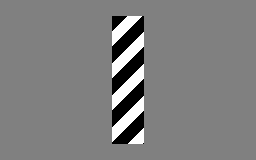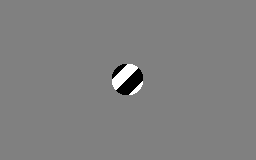Optical Flow
Hao Su
Fall, 2021
Agenda
Basic Idea of Structure from Motion
Structure from Motion
Pipeline of Multi-View 3D Reconstruction:
- Take photos from many views
- Identify points of interest from images
- Search for corresponding points in other images — this step becomes easier in a video
- Compute camera positions
- Estimate 3D point positions
Structure from Motion
Basic Idea
- In a video, a point will move to a neighborhood in the next frame
- Therefore, estimating correspondence in a video should be a relatively easy search task
- However, we will show that, we can even locate the point without search or comparison!
Representation of Video
Video
- A video is a subsequence of frames captured over time
- Can be represented as a function $f(x,y,t)$, where $(x,y)$ indexes coordinates on the image plane, and $t$ indexes the time frame.
Video
- A real video sequence:

Motion and Optical Flow
General Idea of Flow Field
Motion Field and Optical Flow Field
- Assume that we use a video recorder to capture a moving star at $30$ frames per second
- The star moves from $P_t\in\R{3}$ at frame $t$ to $P_{t+1}\in\R{3}$ at frame $t+1$
- The corresponding pixel moves from $x_t\in\R{2}$ at frame $t$ to $x_{t+1}\in\R{2}$ at frame $t+1$
Example of Optical Flow
How Motion Field Causes Optical Flow
The relative motion between objects and the camera can cause motion field
- Object can move (e.g., cars are moving)
- The movement of the camera also causes optical flow
Optical Flow Caused by Camera Motion
Optical Flow Caused by Camera Motion
Not All Motion Causes Optical Flow
Look at the following example:

- The sphere has uniform surface material. When the sphere revolves, no motion is perceived.
- Even if the object does not revolve, a moving light source can produce shading changes (fake motion)
Estimation of Optical Flow
Task Definition
- Given two subsequent frames, can we estimate the optical flow field $(u(x,y), v(x,y))$ between them?
- $u(x,y):$ the $x$-offset of the flow vector
- $v(x,y):$ the $y$-offset of the flow vector
Key Assumptions of Optical Flow Estimation
- Appearance constancy: Projection of the same point looks the same in every frame
- Small motion: Points do not move very far
- Spatial coherence: Points move like their neigbhors
Key Assumptions: Appearance Constancy
Key Assumptions: Small Motion
Key Assumptions: Spatial Coherence
Summary of Key Assumptions
- Brightness constancy: $I(x+u, y+v, t+1) = I(x,y,t)$
- Small motion: $u\text{ and } v\text{ is small for }I(x+u, y+v, t+1) = I(x,y,t)$
- Spatial coherence: $I(x,y,t) \text{ is a smooth function at most locations}$
- When $x$ changes a bit, $f(x)$ only changes a bit
Optical Flow Constraints (grayscale images)
Due to brightness constancy constraint, $I(x+u, y+v, t+1) = I(x,y,t)$. Therefore,
\[
\frac{\partial I}{\partial x}u+\frac{\partial I}{\partial y}v+\frac{\partial I}{\partial t}=0\tag{brightness constancy constraint}
\]
Brightness Constancy Constraint
\[
\frac{\partial I}{\partial x}u+\frac{\partial I}{\partial y}v+\frac{\partial I}{\partial t}=0
\]
Brightness Constancy Constraint
\[
\frac{\partial I}{\partial x}u+\frac{\partial I}{\partial y}v+\frac{\partial I}{\partial t}=0
\]
- Given a pixel $(x,y,t)$ in a video, $\frac{\partial I}{\partial x}(x,y,t)$, $\frac{\partial I}{\partial y}(x,y,t)$, and $\frac{\partial I}{\partial t}(x,y,t)$ are three known numbers.
- Thus it is a linear equation over $u$ and $v$.
- Obviously, $(u, v)$ cannot be uniquely determined by this single equation!
\[
\frac{\partial I}{\partial x}u+\frac{\partial I}{\partial y}v+\frac{\partial I}{\partial t}=0
\]
What is $(\frac{\partial I}{\partial x}, \frac{\partial I}{\partial y})$?
Gradient, the direction that function value increases fastest!
Orthogonal to edge direction.

Suppose that $(u_0,v_0)$ satisfies the brightness constancy constraints at $(x, y, t)$. What are other solutions?
For any $(\Delta u, \Delta v)$ such that $\frac{\partial I}{\partial x}\Delta u + \frac{\partial I}{\partial y}\Delta v=0$, $(u+\Delta u, v+\Delta v)$ must also be a solution!
In other words, $[\frac{\partial I}{\partial u}, \frac{\partial I}{\partial v}]^T \perp [\Delta u, \Delta v]^T$.
But $[\frac{\partial I}{\partial u}, \frac{\partial I}{\partial v}]^T$ is orthogonal to edge direction. So $[\Delta u, \Delta v]^T$ is along the edge direction!
\[
\frac{\partial I}{\partial x}u+\frac{\partial I}{\partial y}v+\frac{\partial I}{\partial t}=0
\]
Suppose that $(u_0,v_0)$ satisfies the brightness constancy constraints at $(x, y, t)$.

The feeling is pixels are moving downwards

The feeling is pixels are moving towards bottom-right
- For any $(\Delta u, \Delta v)$ such that $\frac{\partial I}{\partial x}\Delta u + \frac{\partial I}{\partial y}\Delta v=0$, $(u+\Delta u, v+\Delta v)$ must also be a solution!
- $[\Delta u, \Delta v]^T$ is along the edge direction!


Addressing Ambiguity in Brightness Constancy Constraint
Spatial Coherence
First-order expansion of $I(x,y,t)$ provides one equation for two variables $(u,v)$ at a pixel at $(x,y,t)$. How can we get more equations for the pixel?
- We add an additional assumption: Neighboring pixels have the same $(u,v)$.
Spatial Coherence
- If we take a $5\times 5$ neighborhood window around the pixel, at each pixel in the window we have an equation for $(u,v)$. So we have 25 equations in total.
- Denote $I_x(p)= \frac{\partial I}{\partial x}(p)$, $I_y(p)= \frac{\partial I}{\partial y}(p)$, $I_t(p)= \frac{\partial I}{\partial t}(p)$ where $p=(x,y,t)$. \[ \frac{\partial I}{\partial x}u+\frac{\partial I}{\partial y}v+\frac{\partial I}{\partial t}=0\Rightarrow [I_x(p), I_y(p)] \begin{bmatrix} u\\v \end{bmatrix}+I_t(p)=0 \]
- Constraints in matrix form \[ \begin{bmatrix} I_x(p_1) & I_y(p_1)\\ I_x(p_2) & I_y(p_2)\\ \vdots & \vdots\\ I_x(p_{25}) & I_y(p_{25}) \end{bmatrix} \begin{bmatrix} u \\ v \end{bmatrix}= - \begin{bmatrix} I_t(p_1)\\ I_t(p_2)\\ \vdots\\ I_t(p_{25}) \end{bmatrix} \]
Spatial Coherence
\[
\underbrace{
\begin{bmatrix}
I_x(p_1) & I_y(p_1)\\
I_x(p_2) & I_y(p_2)\\
\vdots & \vdots\\
I_x(p_{25}) & I_y(p_{25})
\end{bmatrix}}_{A}
\underbrace{
\begin{bmatrix}
u \\ v
\end{bmatrix}}_{d}=
\underbrace{
-
\begin{bmatrix}
I_t(p_1)\\
I_t(p_2)\\
\vdots\\
I_t(p_{25})
\end{bmatrix}}_{b}
\]
Written compactly:
\[
Ad=b
\]
Overdetermined system. Can be solved by least square:
\[
d = (A^TA)^{-1}A^Tb
\]
\[
d = (A^TA)^{-1}A^Tb
\]
\[
A = \begin{bmatrix}
I_x(p_1) & I_y(p_1)\\
I_x(p_2) & I_y(p_2)\\
\vdots & \vdots\\
I_x(p_{25}) & I_y(p_{25})
\end{bmatrix},\quad
b=-
\begin{bmatrix}
I_t(p_1)\\
I_t(p_2)\\
\vdots\\
I_t(p_{25})
\end{bmatrix}
\]
\[
A^TA=
\begin{bmatrix}
I_x(p_1) & I_x(p_2) & \cdots & I_x(p_{25})\\
I_y(p_1) & I_y(p_2) & \cdots & I_y(p_{25})\\
\end{bmatrix}
\begin{bmatrix}
I_x(p_1) & I_y(p_1)\\
I_x(p_2) & I_y(p_2)\\
\vdots & \vdots\\
I_x(p_{25}) & I_y(p_{25})
\end{bmatrix}=
\begin{bmatrix}
\sum_i I_x(p_i)I_x(p_i) & \sum_i I_x(p_i)I_y(p_i)\\
\sum_i I_x(p_i)I_y(p_i) & \sum_i I_y(p_i)I_y(p_i)
\end{bmatrix}
\]
\[
A^Tb =
\begin{bmatrix}
I_x(p_1) & I_x(p_2) & \cdots & I_x(p_{25})\\
I_y(p_1) & I_y(p_2) & \cdots & I_y(p_{25})\\
\end{bmatrix}
\left(-
\begin{bmatrix}
I_t(p_1)\\
I_t(p_2)\\
\vdots\\
I_t(p_{25})
\end{bmatrix}\right)=
\begin{bmatrix}
-\sum_i I_x(p_i) I_t(p_i)\\
-\sum_i I_y(p_i) I_t(p_i)
\end{bmatrix}
\]
Solutions for Estimating Optical Flow
To sum up, given $(x,y,t)$ and its neighborhood, we can estimate the flow vector
$
d=
\begin{bmatrix}
u\\v
\end{bmatrix}
$ that points from $(x,y,t)$ to $(x+u,y+v,t+1)$ by:
\[
d = (A^TA)^{-1}A^Tb
\]
where
\[
A^TA=
\begin{bmatrix}
\sum I_xI_x & \sum I_xI_y\\
\sum I_xI_y & \sum I_yI_y
\end{bmatrix}, \quad
A^Tb =
-
\begin{bmatrix}
\sum I_x I_t\\
\sum I_y I_t
\end{bmatrix}
\]
Stability Analysis
Q: Which pixels will give us better estimations?
Statistical View of Image Formation
In computer vision, we often take a statistical view to treat images. We often assume that the observation is corrupted by some unknown noises.

For example,
- dirts on the lens
- imperfection of optics sensor and signal processing in the camera
- blur caused by object motion
- caustics caused by material refraction and reflection

Statistical View of Image Formation
For example, additive noise model assumes that
\[
I(x,y,t)=I^{gt}(x,y,t)+\epsilon
\]
where $I^{gt}(x,y,t)$ is the hypothesized groundtruth pixel value, and $\epsilon$ is a random noise sampled from a distribution $\mathcal{P}$.
Statistical View of Image Formation
Recall that
\[
A^TA=
\begin{bmatrix}
\sum I_xI_x & \sum I_xI_y\\
\sum I_xI_y & \sum I_yI_y
\end{bmatrix}
\]
Since every pixel value is a random variable, $A^TA$ is in fact a random matrix (a matrix that all elements are random variables).
Conditions for Solvability
- To estimate the flow vector $d = (A^TA)^{-1}A^Tb$, the key challenge is to compute $(A^TA)^{-1}$
- First of all, $A^TA$ is a symmetric matrix
Spectral Decomposition Theorem
For any symmetric matrix $M\in\R{n\times n}$, we have a theorem from linear algebra that,
\begin{equation}
M=V\Lambda V^T \tag{spectral decomposition theorem}
\end{equation}
where
- $\Lambda\in\R{n\times n}$: a diagonal matrix whose diagonal entries are eigenvalues
- $V\in\R{n\times n}$: an orthonormal matrix such that the $i$-th column is the eigenvector corresponding to the $i$-th eigenvalue
Conditions for Solvability
- Assume that $A^TA=V\Lambda V^T$, then $(A^TA)^{-1}=V\Lambda^{-1}V^T$
- If $V=[v_1, v_2]$ where $v_1, v_2\in\R{2\times 1}$, then \[ (A^TA)^{-1}=[v_1\ v_2] \begin{bmatrix} \frac{1}{\lambda_1} & 0 \\ 0 & \frac{1}{\lambda_2} \\ \end{bmatrix} \begin{bmatrix} v_1^T\\v_2^T \end{bmatrix}= \frac{1}{\lambda_1}v_1v_1^T+\frac{1}{\lambda_2}v_2v_2^T \]
- As we analyzed before, there is randomness in $A^TA$. In fact, there are also randomness in $\lambda_1$ and $\lambda_2$. They are random numbers near the groundtruth value.
- Let us assume that $\lambda_1>\lambda_2>0$.
- If $\lambda_1$ and $\lambda_2$ are both big. Good!
- If $\lambda_2\approx 0$, then $\frac{1}{\lambda_2}$ will be very unstable due to randomness and numerical errors. Thus $(A^TA)^{-1}$ will be very unstable!
Conditions for Solvability
when the eigenvalues $\lambda_1$ and $\lambda_2$ of \( A^TA= \begin{bmatrix} \sum I_xI_x & \sum I_xI_y\\ \sum I_xI_y & \sum I_yI_y \end{bmatrix} \) are both large.
Q: What is the intuition of this result?
Review: Diagram of Cornerness
Let
$M=\sum \begin{bmatrix}
I_x I_x & I_x I_y\\
I_x I_y & I_yI_y
\end{bmatrix}$, suppose the eigenvalues of $M$ are $\lambda_1$ and $\lambda_2$.

Good points to track are Harris corner points!
Low Textured Area
Edge
Corner
End
